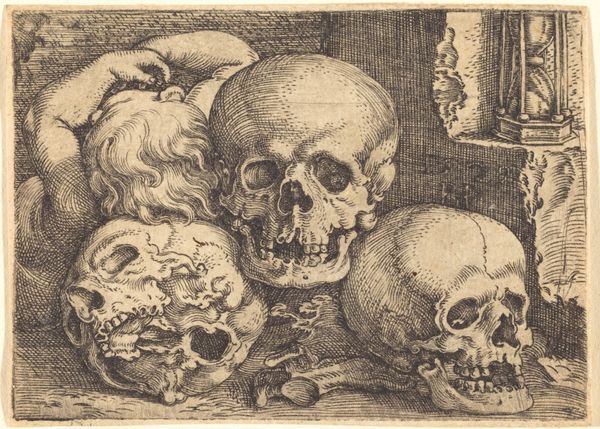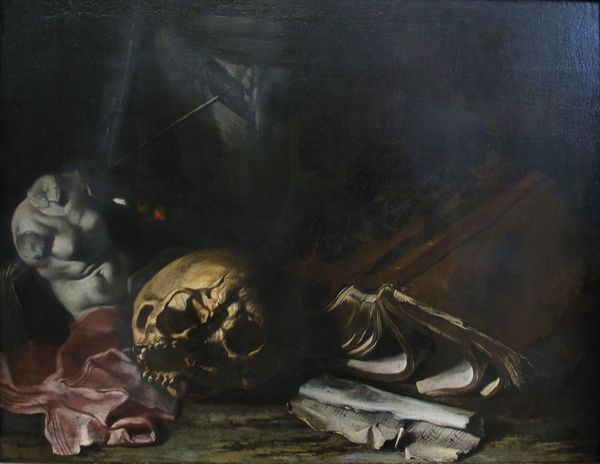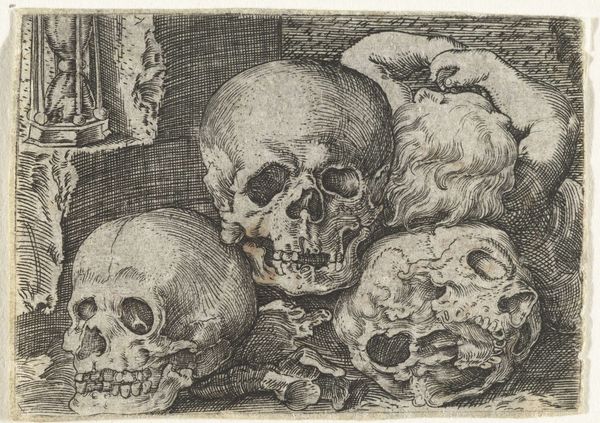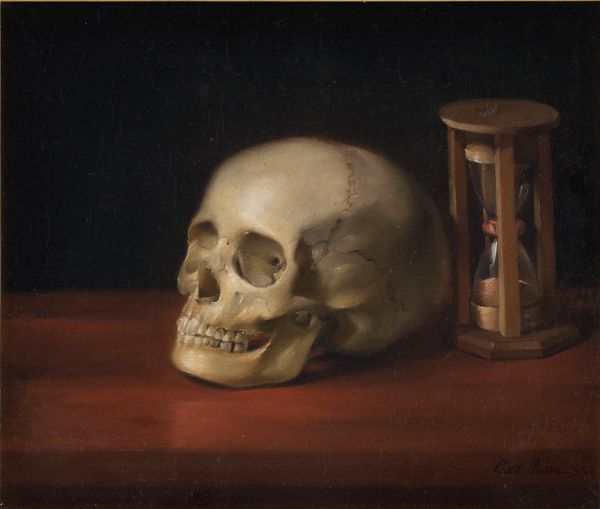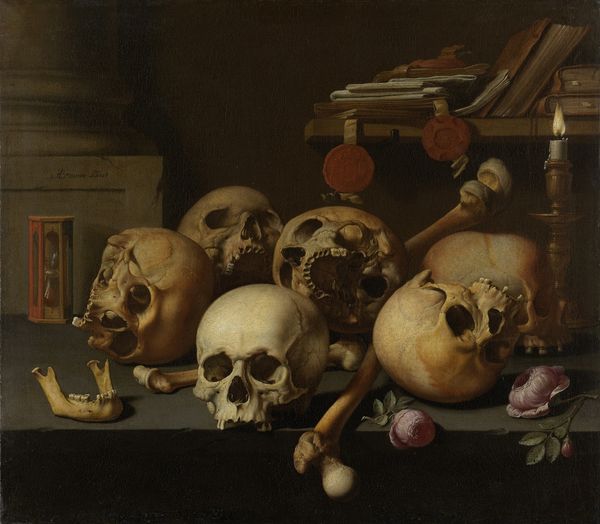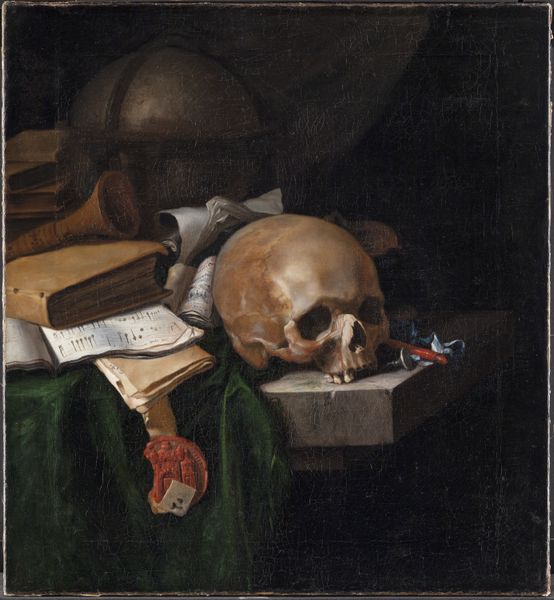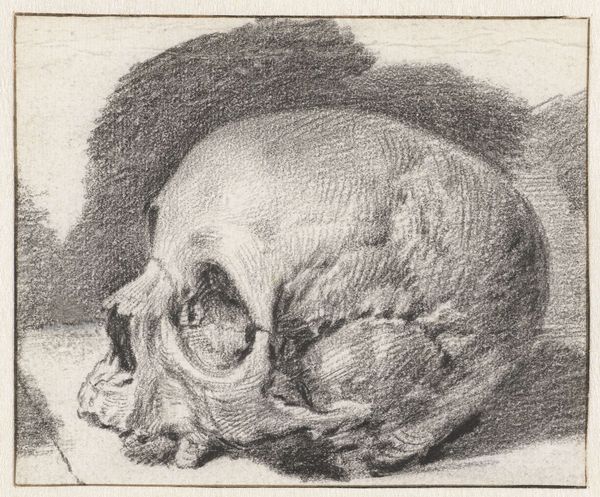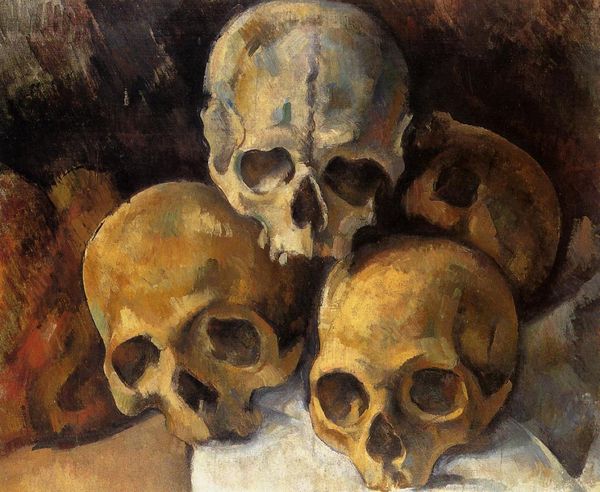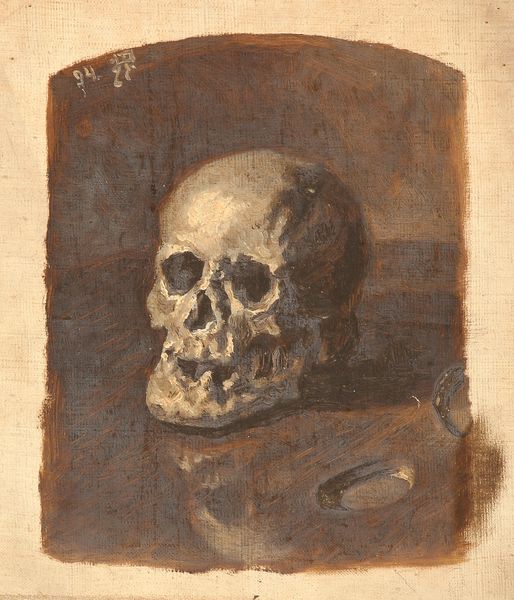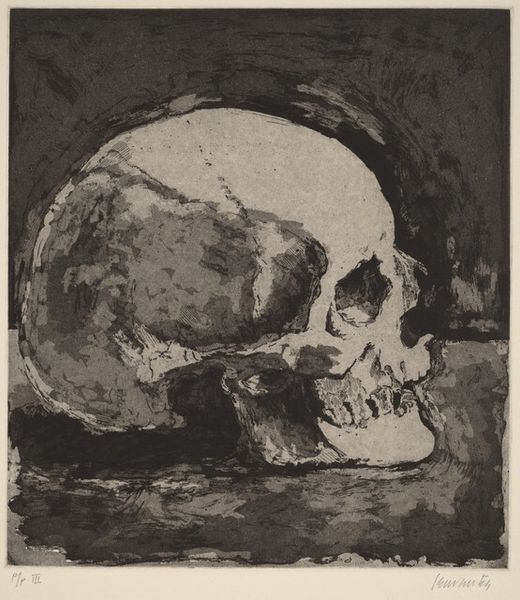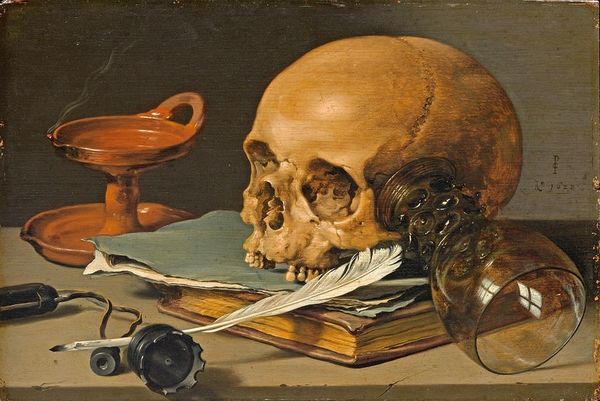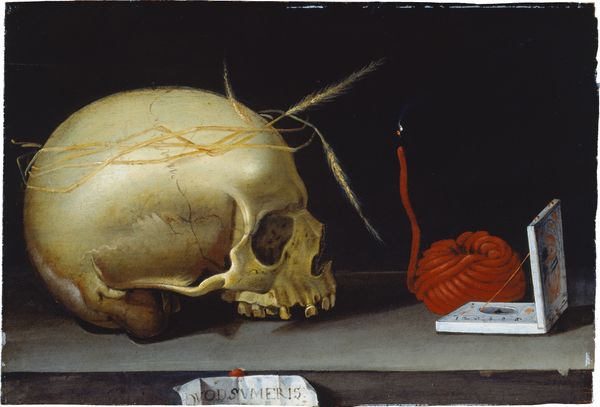
painting, oil-paint
#
still-life
#
painting
#
oil-paint
#
charcoal drawing
#
oil painting
#
momento-mori
#
romanticism
Dimensions: 31.5 x 60 cm
Copyright: Public domain
Curator: Here we have Théodore Géricault's unsettling still life, "The Three Skulls," created in 1814. The piece is rendered in oil paint. Editor: Yikes. It feels... claustrophobic. Like these skulls are jammed into a dimly lit corner, whispering secrets only bones understand. Curator: Well, that's certainly evocative! Géricault painted this during his early years. Still lifes, especially of this morbid bent, were popular academic exercises, right? Testing an artist’s skill with light, shadow, and the illusion of depth. And Géricault situates himself in the Romantic movement. Editor: Illusion, yes, but they’re so viscerally there, you know? The texture... I almost feel like I could reach out and feel the grit of bone. The central skull grabs my gaze, like the protagonist in a morbid drama, while its companions exist in varying states of decay on either side of it. It is quite striking, with this emphasis on the decaying qualities. Curator: That drama is key. Géricault was deeply engaged with depicting the realities of death, in ways that both confronted and unsettled the comfortable norms of his bourgeois audience. You know that, around this time, the morgue in Paris opened to the public, effectively turning death into public spectacle. Editor: So it’s spectacle but with… soul? Because there’s a sensitivity here, a quiet acknowledgement that these were once living beings, that their stories, whatever they may have been, have dissolved. Or are we, perhaps, confronting the banality of it all, even in death? That they are reduced to such form... a moment-mori made eternal? Curator: Precisely! It's both spectacle and an indictment of its reduction to just that. He invites you to contemplate mortality, while also critiquing the societal gaze upon death itself. That, in itself, shows some tension... as we could also suggest his acceptance and celebration of our fascination with such still lives as objects and items worthy of careful study. Editor: It is haunting. I wonder, how did this early foray into the macabre shape his later, larger works? This is potent stuff. It shows what a still life can convey of the wider political and aesthetic interests, so central to the concerns of that age. Curator: Absolutely, setting the stage for grander statements on the human condition through striking visuals. Thank you for bringing out its soul, or lack thereof.
Comments
No comments
Be the first to comment and join the conversation on the ultimate creative platform.
